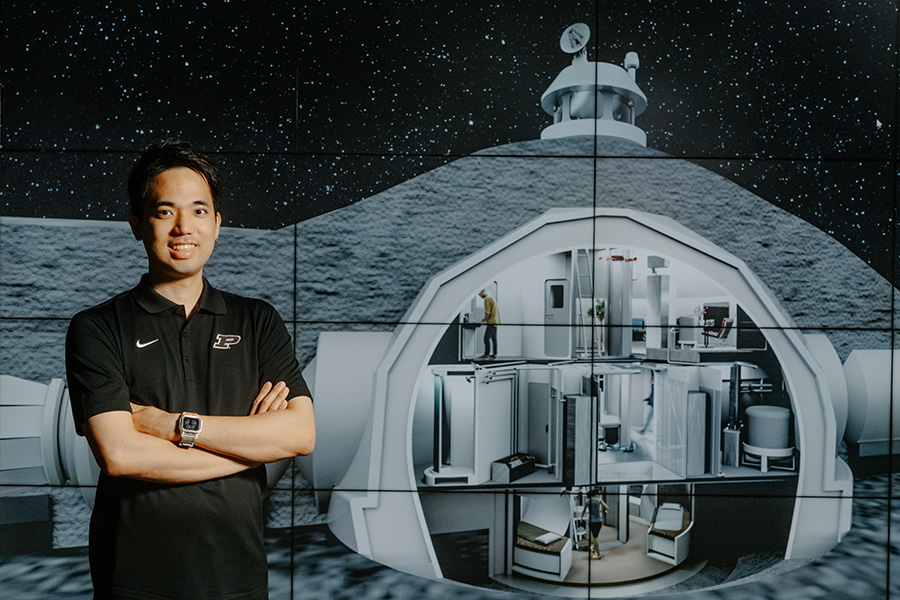Bridging Earth and Space: Takaharu Igarashi's Systems Approach to Safer Construction

Takaharu Igarashi is earning international recognition for rethinking safety, design, and construction — on Earth and in space. His research blends architecture and aerospace engineering to understand how complex systems fail. Those lessons can prevent future disasters.
Igarashi’s first journal article, published in Risk Analysis in July 2025, offers a comprehensive review of nearly 30 accident causation models used across disciplines such as aviation, construction, and system safety.
“My motivation was to bring conceptual clarity to a fragmented field,” says Igarashi, a post-doctoral researcher (PhD '24) in Purdue University’s School of Aeronautics and Astronautics. “By learning how accidents have been modeled and misunderstood across industries, we can build safer, more resilient systems—especially in emerging domains like space.”
Cartography of Accident Causation Models: Remapping the Modeling Landscape identifies overlaps and inconsistencies, organizing these models into a unified framework to help engineers and researchers apply them more effectively.
Igarashi has earned accolades for his research, conducted with guidance from Purdue professor Karen Marais in Value Through Reliability, Safety, and Sustainability (VRSS) lab. Igarashi’s dedication to system safety was first recognized when he received the Brian Mar Best Student Paper Award at the International Council on Systems Engineering (INCOSE) 32nd Annual Symposium. That research proposed a new framework to identify causes in construction failures, reinforcing his commitment to cross-domain learning.
“We cannot afford to learn by making mistakes in space,” he says. “By understanding failures on the ground, we can prevent them before they ever reach orbit.”
Igarashi has found Purdue to be the ideal bridge between his architectural background and his aerospace ambitions. “Purdue allowed me to explore ideas that sit between disciplines,” he reflects. “It’s a place where curiosity and collaboration come together to make innovation possible.”
By uniting architecture and aerospace engineering, Igarashi is helping shape a future where humanity builds structures are not just functional, but fundamentally safe, on Earth, Mars, and in space.
